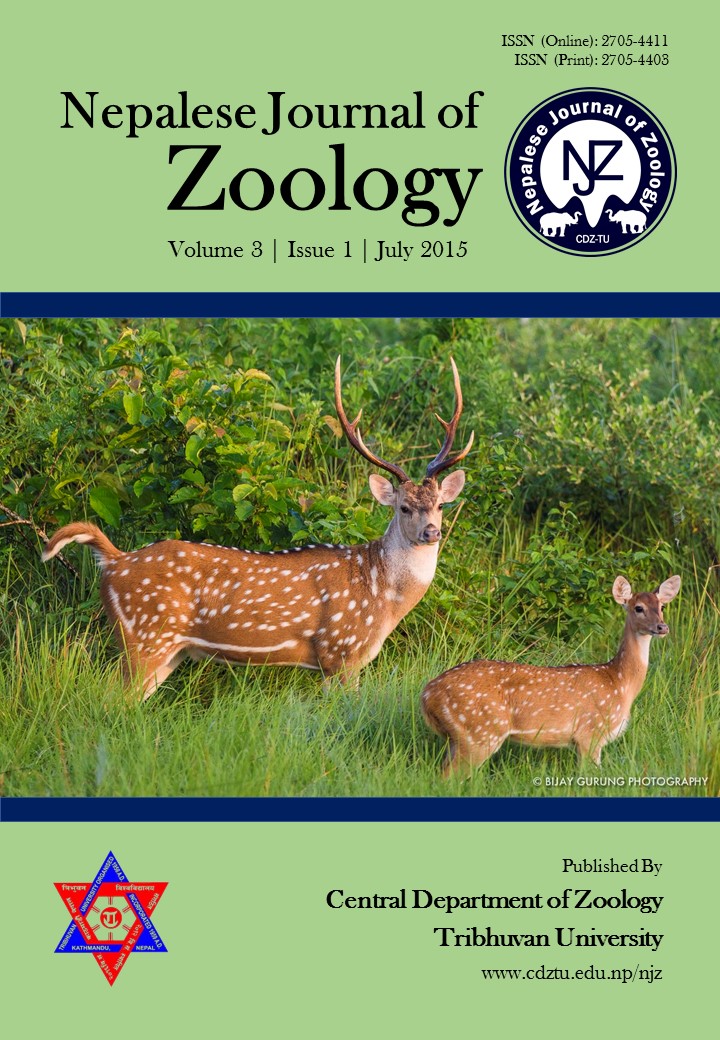Arthropod Pests of Pear (Pyrus pyrifolia, Nakai) in Central Horticulture Centre, Kirtipur, Kathmandu, Nepal
DOI:
https://doi.org/10.3126/njz.v3i1.30864Keywords:
Click beetle, Fruit Fly, Pear orchard, Spider mite, Tortoise beetleAbstract
Arthropod pests cause serious threats to pear orchards, resulting heavy reduction in their yield. The present study focused on the arthropod pests of Pear (Pyrus pyrifolia, Nakai), in the Pear orchard of Central Horticulture Centre, Kirtipur, Kathmandu. It was carried out in two seasons: Spring and Summer of 2012. The pests were collected through different methods such as hand picking, knock down process, beating process, sweeping and use of aspirator, depending upon the size of pests. The statistical analyses were performed at 95% confidence level in R-Software (R-Console version2.15.2).
Altogether, 12 species of pests belonging to 11 families were observed during the study. The results showed that the pest's population was independent to months (X^2=7.663, df=5, P+0.175), seasons (X^2=0.188, df=1, P+0.664), and sites (F=0.446, df=2, P=0.652), however, population density of pests was higher in June (409) and summer (966). Spider mite (Tetranychus spp.), Aphids (Aphis spp.), Thrips (Scirtothrips spp.) Tortoise beetle (Metrona spp.) and Fruitfly (Dacus spp.) were the common pest species and the most dominant one was the Spider mite (Tetranychus spp.), occurring almost in all months, seasons and sites. The overall diversity index of pear pests was high, i.e, 0.800, however regarding individual species diversity index and dominance index, Spider mite (Tetranuchus spp.) had higher diversity indices, followed by Tortoise beetle (Metriona spp.), Fruit fly (Dacus spp.) and the least was observed in Click Beetle (Agriotes spp.). Although the pest population is independent to months and seasons, the present study showed that pear plants were more affected by pests during hot and warm season.
Downloads
Downloads
Published
How to Cite
Issue
Section
License
This license enables reusers to distribute, remix, adapt, and build upon the material in any medium or format for noncommercial purposes only, and only so long as attribution is given to the creator.

